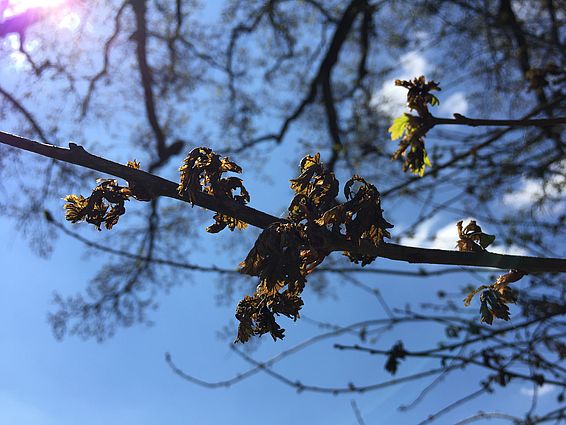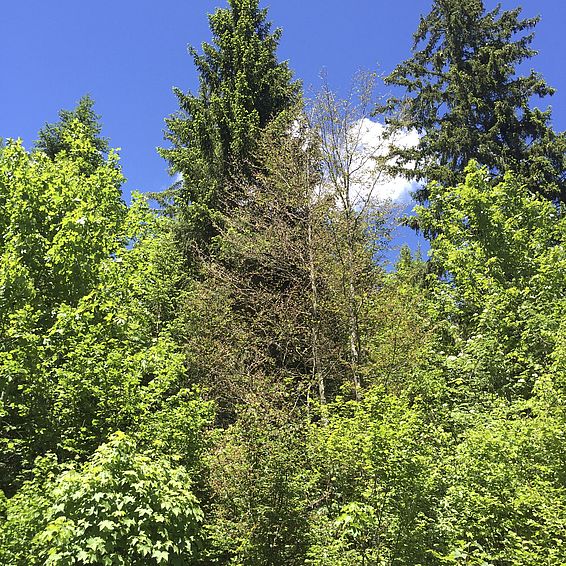Trees growing at elevations higher than 800 m are increasingly being exposed to spring frost. A joint paper by researchers from the Swiss Federal Institute for Forest, Snow and Landscape Research (WSL and SLF), the University of Neuchatel, and Agroscope's Conthey site reveals a paradoxical effect of climate warming which increases these trees' vulnerability. This research was published online in the journal Agricultural and Forest Meteorology.
In April 2017, a sudden cold spell froze the vineyards and orchards, particularly in Valais, resulting in a significant loss of production. In forests too, several species suffered major damage. The frequency of such late frost events is likely to increase in future as a result of ever earlier vegetation onset in the spring, due to climate warming. At higher elevations, the vegetation shift linked to rising temperatures has occurred at a faster rate than the advance in the latest frost date – indeed so rapidly that the risk of exposure of young leaves or flowers to spring frost is rising and may increase further in future.
Led by climatologist Martine Rebetez and biologist Yann Vitasse, the five researchers from the three Swiss institutions, with the support of the Federal Office for the Environment, analyzed series of uninterrupted daily data since at least 1975 from 50 weather stations forming part of the MeteoSwiss network spread throughout Switzerland.
They also conducted analyses of the thousands of observations made by members of the public relating to beech and spruce tree leaf-out dates, as well as the flowering dates of cherry and apple trees. "These two dominant forest tree species in Switzerland were used along with these two widely cultivated fruit tree species to calibrate a number of models to predict the flowering and leaf-out dates under various climatic conditions", explains Yann Vitasse.
The scientists subsequently analyzed the time lag between the latest frost and the predicted leaf-out or flowering dates, or in other words the species' safety margin in relation to frost.
"Our research shows that in light of the intense warming observed over the past 40 years, the safety margin in relation to frost has decreased at elevations higher than 800 m while remaining constant at lower elevations", continues the researcher.
The research shows that it is currently inappropriate to plant varieties of fruit tree species or prefer forest tree species which are better suited to an ever warmer summer climate, as they often start their growing season earlier in the spring and would therefore be particularly susceptible to frost damage.
[Translate to Englisch:] Kontakt
Links and documents
Scientific publication:
- Vitasse Y, Schneider L, Rixen C, Christen D, Rebetez M (2018) Increase in the risk of exposure of forest and fruit trees to spring frosts at higher elevations in Switzerland over the last four decades. Agricultural and Forest Meteorology 248: 60-69; doi: 10.1016/j.agrformet.2017.09.005
- Download: free access until November 13, 2017 (PDF)
(Kopie 4)
Copyright
WSL and SLF provide the artwork for imaging of press articles relating to this media release for free. Transferring and saving the images in image databases and saving of images by third parties is not allowed.

